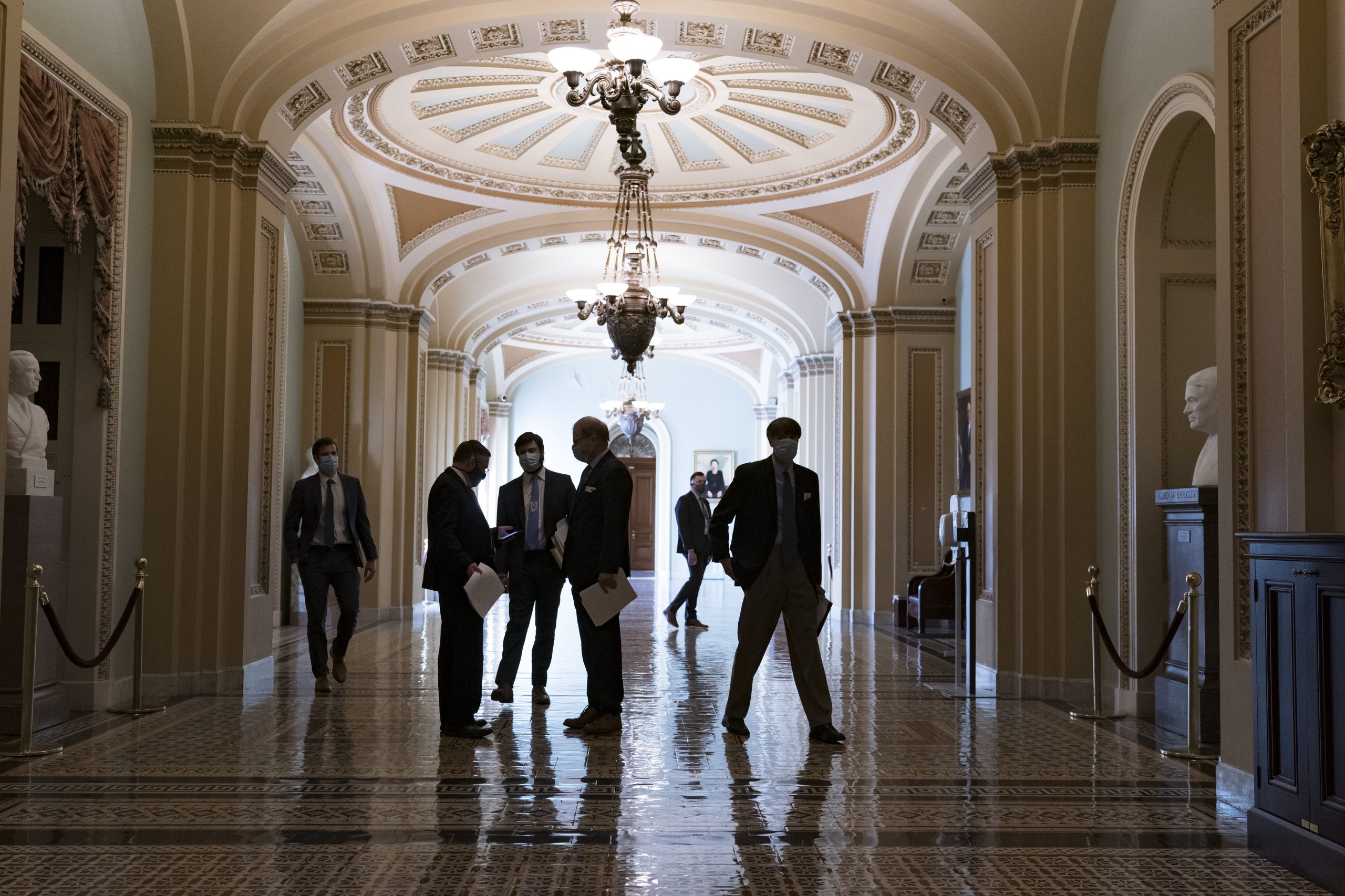The House voted Tuesday to allow close to 10,000 of its employees to bargain collectively and form unions, the biggest expansion of congressional staffer rights in three decades.
The move comes amid a swelling tidal wave of grievances from staff, along with efforts by leadership and lawmakers to stem burnout and brain drain among employees who serve vital roles in the legislative branch, including serving constituents, conducting oversight of federal agencies and drafting legislation.
The resolution codifies House employees’ right to organize and bargain collectively, including aides in personal offices, district offices and committee staff. The measure expands rights already given to other workers in the Legislative Branch, including Capitol Police, the Library of Congress and professional tour guides.
“It’s just outrageous that our own staffers had to wait 26 years after collective bargaining rights were afforded to everybody else on Capitol Hill,” said Rep. Andy Levin (D-Mich.), who introduced the resolution in February. “This is the temple of our democracy, and if workers don’t have their rights here, it’s kind of hollow to say that we’re standing up for the rights of people everywhere.”
“Our job here is to shut up and pass a law that gives people their rights,” he added.
House leaders have long been aware of abysmal staff retention, low pay and other factors that drive staffers off Capitol Hill, or deter applications in the first place. But 2021 saw the highest rate of staff turnover in more than 20 years, a reflection of the destabilizing effects of the pandemic and the toll that frequent threats and the Jan. 6 insurrection have taken on staff.
Lawmakers have ramped up efforts to improve the Hill as a workplace in recent years. The Select Committee on the Modernization of Congress has zeroed in on staff recruitment and retention, along with diversity. House Majority Leader Steny Hoyer (D-Md.) and Democratic Caucus Chair Hakeem Jeffries (D-N.Y.) made a successful push to increase individual office budgets by 20 percent in a recent spending bill, providing funding for possible pay raises. On Friday, Speaker Nancy Pelosi announced a minimum pay rate of $45,000 for House employees, which kicks in on Sept. 1.
The measure providing collective bargaining rights does not need Senate approval, as it only applies to operations within the House. And a flurry of organizing, at least in Democratic offices, is already expected in the coming days and weeks, even before the Office of Congressional Workplace Rights issues official guidance on a hugely complicated process.
Many questions remain about the size and scope of bargaining units, as well as who would qualify as management or would otherwise be ineligible. Individual bargaining units — and each congressional office could have its own — will make those decisions and delineations. Like most workplace operations on Capitol Hill, there may not be a blanket answer.
Chiefs of staff and other senior aides have received guidance from the Office of House Employment Counsel on unionization, warning those senior staffers against having any discussions with other employees. Doing so could be interpreted as interfering with staff unionization, the attorneys warned.
John D. Uelmen, the Office of Congressional Workplace Rights general counsel, told lawmakers in March there could be as many as 500 “employing offices” in the House. But those could band together to cooperate. The OCWR told House lawmakers on April 5 that their offices would need an additional $500,000 and two more full-time employees to support unionization in the House.
A group of 12 aides may jump-start the process — they launched the Congressional Workers Union in February, despite no official collective bargaining protections on the books. They kept their organizing committee anonymous, but they now have the House’s protection from retaliation and firing for discussing unionization.
“We can’t retain the talent, we can’t retain the representation that we need to actually meet the needs of the American people,” said a member of the union’s organizing committee, granted anonymity to speak candidly. “Right now, we’re seeing a brain drain from Congress to the powerful special interests who seek to influence it, because those powerful special interests can afford to pay their employees enough that congressional staffers are incentivized to leave.”
In an interview Tuesday before the vote, members of the Congressional Workers Union organizing committee underscored how they view the vote and subsequent bargaining process as a test of “whether our bosses are capable and willing to walk the walk when it comes to workers’ rights in their own workplaces.”
“The public is really watching to see if they’re able to walk the walk and whether they’re aware of the importance of upholding their values in their offices — or if Congress is really above the laws it creates,” one of the members of the group said.
Unionizing efforts have gained unexpected momentum in the last several months, spurred by a historically tight labor market, outspoken staffers and an uncommonly pro-union White House. The Biden administration has been aggressive in its support for organized labor, sending Cabinet members to picket lines and even recently inviting union members to the White House, and workers across the country have felt more empowered as employers struggle to fill jobs.
There was a 57 percent increase nationwide in the number of petitions to hold a union election in the first half of fiscal 2022, according to the National Labor Relations Board — 1,174, compared to 748 during the first half of fiscal 2021. Some of those drives, such as at Starbucks and Amazon, had the outspoken support of Democratic leaders, the Congressional Workers Union pointed out.
“It would be pretty hard” for lawmakers who have supported private-sector unionizing efforts to vote down a union in the House, another one of the group’s members said. “It should be one of the easiest votes they’ve ever had to take.”
The Congressional Workers Union is not the only group poised to hit the ground running; the Congressional Progressive Staff Association is preparing to give its members support when they try to organize their own offices. And they were ready for the vote Wednesday, hosting a pizza party to watch the House floor together.
The Congressional Workers Union outlined its top priorities Tuesday, including securing more competitive compensation, establishing standard vacation and paid leave policies and improving workplace culture.
“But the No. 1 thing is helping workers, through this process, to have a voice in their workplace,” another member of the group’s organizing committee said. “We hope that our bosses are ready to come to the bargaining table prepared to really give us conditions that will make material improvements.”
And it’s not just about creating better working conditions; for some, it’s about creating a culture that welcomes diverse backgrounds in the nation’s Congress. Historically, Capitol Hill has a reputation for hiring wealthy and politically connected young people to climb the ladder — the people who could afford to pay D.C. rent while earning low pay. Meanwhile, staff of color or without generational wealth were excluded or left behind.
Pelosi acknowledged that diversity was a key motivator for the establishment of a pay floor for House staff. She touted that it would “open the doors to public service for those who may not have been able to afford to do so in the past. This is also an issue of fairness, as many of the youngest staffers working the longest hours often earn the lowest salaries.”
“We’re looking forward to … workers really being empowered to bring their grievances to their bosses, and to be able to have a say in their workplace conditions without fear of retaliation,” one member of the Congressional Workers Union said.




















